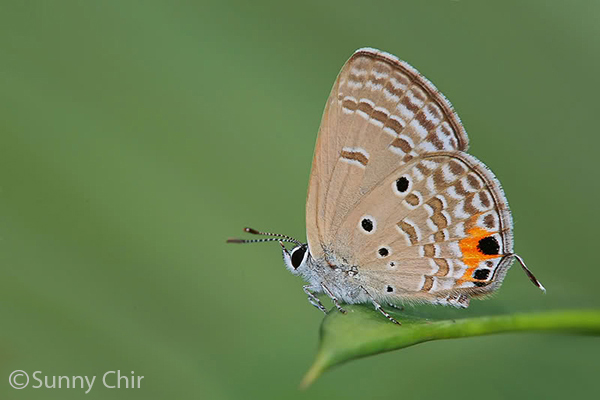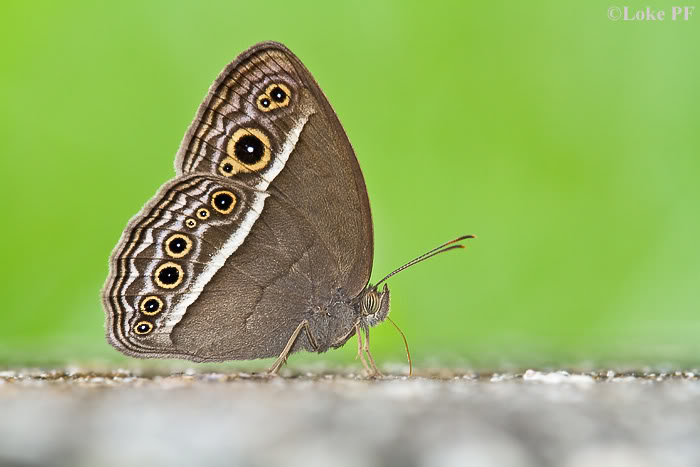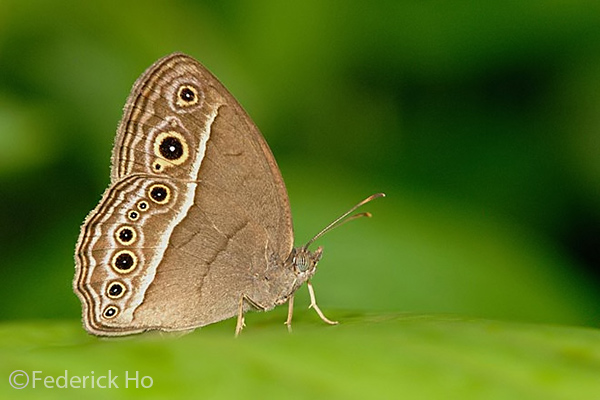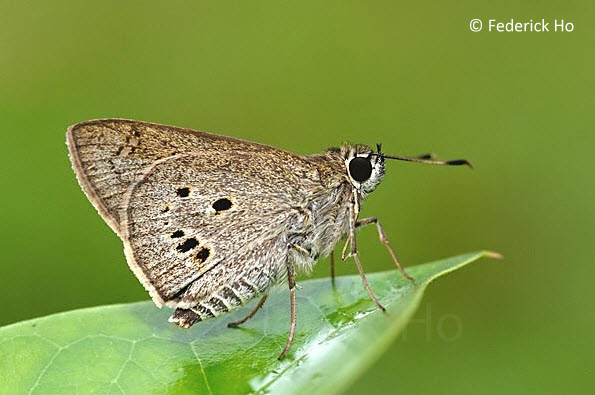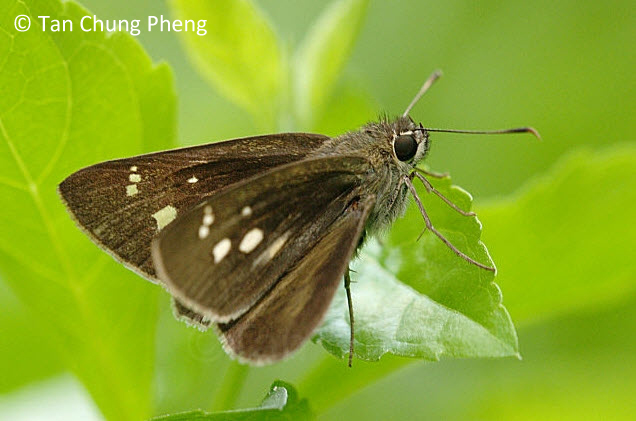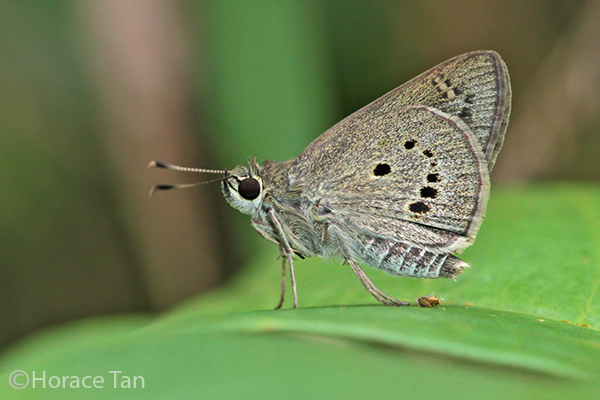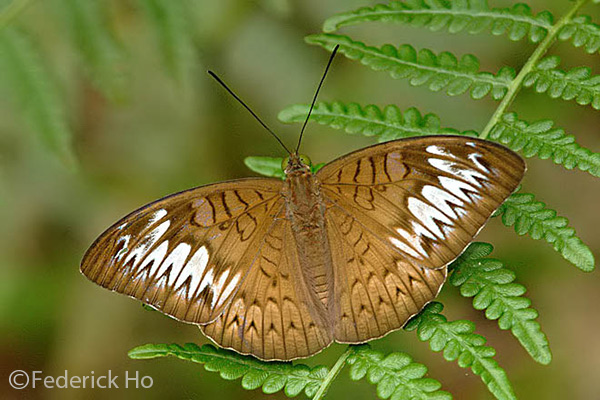In this fifth article introducing Singapore butterflies' favourite nectaring plants, we feature the Red Tree Shrub(Leea rubra). This leafy bush was determined to be extinct in Singapore and "was last collected in the wild by H N Ridley in 1909 at King's Road."* The plant has since been reintroduced through horticultural trade, and is a regularly used plant in many urban parks and gardens today.
The Red Tree Shrub has a wide distribution, ranging from the Indian subcontinent, Indo-China, the Malay Peninsula, the Indonesian archipelago and as far east as Northern Australia. It can be found in dry monsoon forests, equatorial rain forests, savannahs and secondary forests up to 500m in altitude, making it more of a lowland forest species.
: Red Tree Vine, Red Leea, Mali-mali puchok merah (Malay), Katangbai (Thai), 紅葉火筒樹
The Red Tree Shrub is a small, semi-herbaceous shrub growing up to between 2-3m tall. The leaves are bright green, with the young leaves displaying a reddish margin. Mature leaves are green. The leaves are compound, 2-4 pinnate with each leaf about 20-40 cm long. Leaflets are ovate to ovate-oblong or elliptical to elliptical-lanceolate with the margins crenate to shallowly serrate.
![]() The attractive crimson inflorescence of the Red Tree Shrub
The attractive crimson inflorescence of the Red Tree ShrubThe inflorescence ranges between 5-15 cm across and an attractive crimson red. Flowers are small and whitish yellow, about 4mm in diameter, and randomly spread across the inflorescence. There is no perceptible fragrance from the flowers, but they are still attractive to a variety of butterfly species and other insects like bees and wasps.
![]()
![]()
v
![]() The fruits of the Red Tree Shrub in various stages of ripening
The fruits of the Red Tree Shrub in various stages of ripeningThe fruits are about 8-10mm in diameter and initially olive-green turning to reddish-green to crimson red and finally purple-black when ripened. The fruits are attractive to birds, and the Yellow Vented Bulbul has been regularly seen eating the fruits at the Tampines Eco Green. There are about six seeds per fruit, each measuring about 4mm in diameter.
![]() An inflorescence of the Red Tree Shrub showing buds, flowers and fruits together
An inflorescence of the Red Tree Shrub showing buds, flowers and fruits togetherIn Malaysia, the ground root mixed with arsenic is externally applied as a poultice against yaws, while the sap of the plant is drunk simultaneously. In Indonesia, the leaves are externally applied for poulticing wounds, the fruits are eaten as a remedy against yaws and dysentery. In Myanmar, Cambodia and Laos, a decoction or tincture of the root is taken as a remedy for stomach-ache, rheumatism and arthritis. In Thailand, the roots are used as an antipyretic and diaphoretic.
![]()
![]()
![]() One, Two, Three! Long-Banded and Club Silverlines on the Red Tree Shrub flowers
One, Two, Three! Long-Banded and Club Silverlines on the Red Tree Shrub flowersThe attractive crimson inflorescence of the Red Tree Shrub is unmistakable where it is found in our urban parks and gardens. At specific locations like Tampines Eco Green, the Long Banded and Club Silverlines are regular visitors to the flowers of the Red Tree Shrub. At certain times of the day the flowers are also popular with the Grass Yellows and various Hesperiidae.
![]()
![]()
![]()
Over at Gardens By the Bay, the flowers of this plant are visited by various Lycaenids, in particular the Common Tit (
Hypolycaena erylus teatus) and the Peacock Royal (
Tajuria cippus maxentius). The profusion of the red buds create an attractive sight to behold, when the flowers are in full bloom amongst the lush green bushes of the Red Tree Shrub.
![]()
![]() Top : Metallic Caerulean Bottom : Singapore Fourline Blue
Top : Metallic Caerulean Bottom : Singapore Fourline BlueAt other locations where it is cultivated, like the Dairy Farm Nature Park, Hort Park and Sg Buloh Wetland Reserves, various resident butterfly species of these parks can often be observed feeding on the flowers of the Red Tree Shrub. The Metallic Caerulean (
Jamides alecto ageladas) used to be found at the now defunct Mandai Orchid Garden, feeding on the flowers of the Red Tree Shrub. Over at Sg Buloh, the rare resident Singapore Fourline Blue (
Nacaduba pavana singapura) can sometimes be observed at the flowers of the Red Tree Shrub.
![]()
![]()
![]() Larger butterflies also feed on the flowers of the Red Tree Shrub
Larger butterflies also feed on the flowers of the Red Tree ShrubLarger butterflies like the Blue Glassy Tiger (
Ideopsis vulgaris macrina) and the Common Mime (
Chilasa clytia clytia) have regularly been photographed feeding on the flowers of the Red Tree Shrub. Despite the small size of the flowers, these large butterflies do not seem to have any problems feeding on them.
![]()
![]() Skippers also like the flowers of the Red Tree Shrub
Skippers also like the flowers of the Red Tree ShrubAs the plant is easy to propagate by seeds, it is likely that the Red Tree Shrub will be more commonly found in parks and gardens, including private residential gardens in future. This is a plant that would certainly be welcomed by our local butterflies as an attractive food source. The berries are also food for birds, hence this plant would be useful in increasing the biodiversity of our urban gardens.
![]()
The next time you are attracted to the crimson flowers of the Red Tree Shrub, do take a closer look at the inflorescence and see if you can spot any butterflies feeding greedily at the flowers of this plant. You may be delighted to see more than a few butterflies sharing the nectar from the flowers!
![]() On a sea of red...
On a sea of red...And with the red and auspicious flowers of the Red Tree Shrub, all of us at ButterflyCircle would like to wish all our Singaporean readers a .....
![]() Happy 49th Birthday to Singapore!!!
Happy 49th Birthday to Singapore!!!![]() Text by Khew SK : Photos by Sunny Chir, Khew SK, Loke PF, Jonathan Soong & Zhuang YY
Text by Khew SK : Photos by Sunny Chir, Khew SK, Loke PF, Jonathan Soong & Zhuang YY![]()












